How to Vixie? Make a Square knot?
Looking to add a classic knot to your macrame projects? The Square knot is a must-know! It’s sturdy, versatile, and surprisingly easy to master — perfect for beginners and pros alike. In this quick tutorial, we’ll guide you step-by-step on how to create a clean, neat square knot using just four cords. Whether you’re making wall hangings, plant hangers, or friendship bracelets, this knot will become your new favorite go-to. Ready to get knotting? Let’s dive in and make your macrame creations even more beautiful!
KNOTS TUTORIALS
Vixie Macrame
6/18/20256 min read
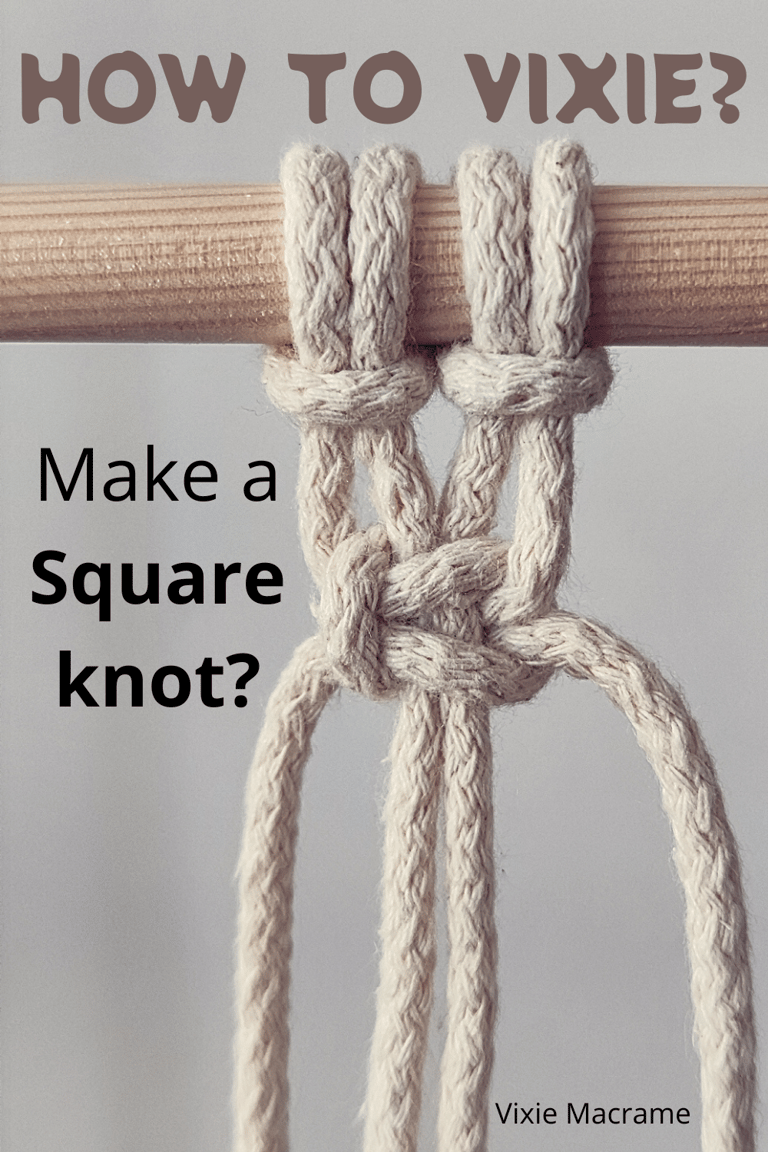

Learning how to make a Square knot is essential for anyone interested in macrame. The Square knot creates a strong, flat pattern by weaving two outer cords around two center cords, making it versatile for many projects. Mastering this knot will give you a solid foundation to build complex designs.
You’ll find that understanding the roles of working cords and anchor cords simplifies the process. Paying attention to common mistakes like uneven tension or incorrect cord placement will help you avoid frustration and achieve cleaner results.
This tutorial will guide you step-by-step, offer practical tips, and highlight frequent errors so you can tie perfect Square knots confidently every time.
Understanding the Square knot
The Square knot is a fundamental macrame knot that uses four strands of cord to create a flat, secure pattern. It’s important to know its structure, how it differs from other knots, and where you can apply it effectively in your projects.
What Is a Square knot?
A Square knot consists of two half knots tied in sequence—one right-facing and one left-facing. You start by crossing the outer right cord over the center cords, then bring the outer left cord over, under, and through the loop. The second half reverses this motion to lock the knot flat.
This knot forms a symmetrical, square-shaped pattern that's strong yet flexible. You need exactly four working cords: two outer cords that do the tying and two center filler cords that stay steady. The even tension you apply ensures your knot lies flat, avoiding twists.
History of the Square knot
The Square knot is one of the oldest and most popular knots used in macramé. It was first used by sailors to tie ropes securely while on ships. Over time, people saw how strong and useful it was and began using it to make decorative items like wall hangings and jewelry. Today, the Square knot is still a favorite in macramé because it is both simple to tie and looks beautiful.
Step-By-Step Square knot Tutorial
To make a proper Square knot, you’ll need to set up your tools, select and prepare your cords correctly, and follow the knotting steps carefully. Learning how to create the knot and practicing it within simple designs will help you become more precise and efficient.
STEP 1
Attach a cord to the dowel (or your chosen object) using a Lark's Head knot (2).
Begin with 4 cords: the 2 outer cords are the working cords, and the 2 center cords are the anchor cords.
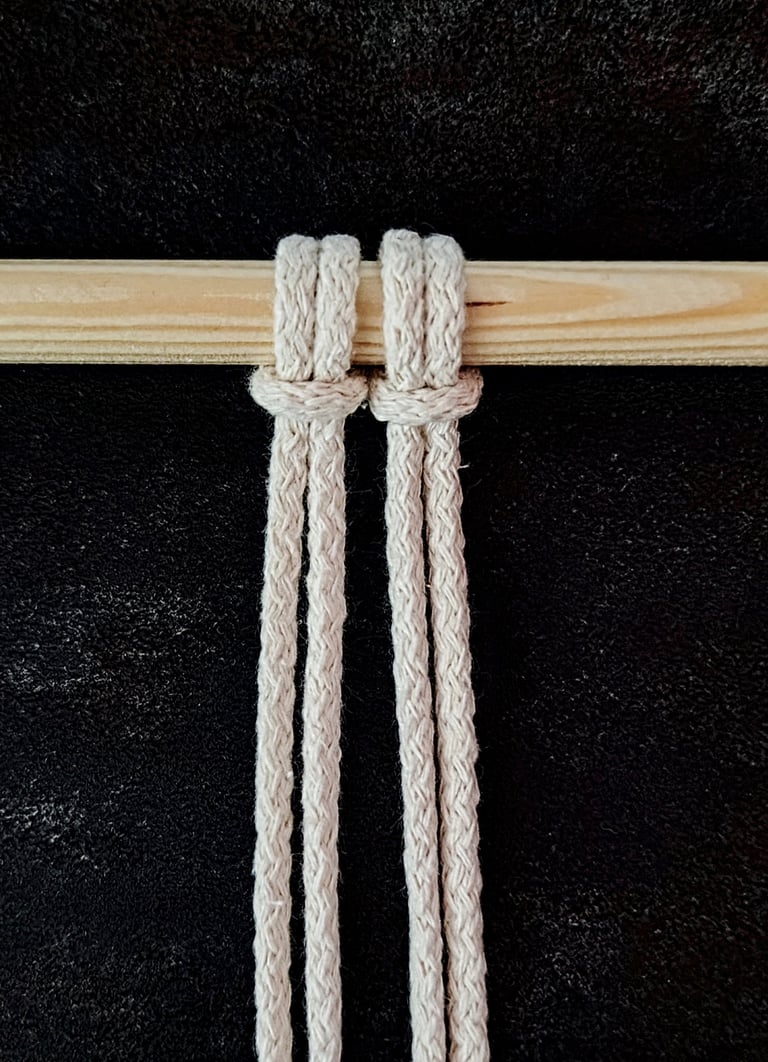

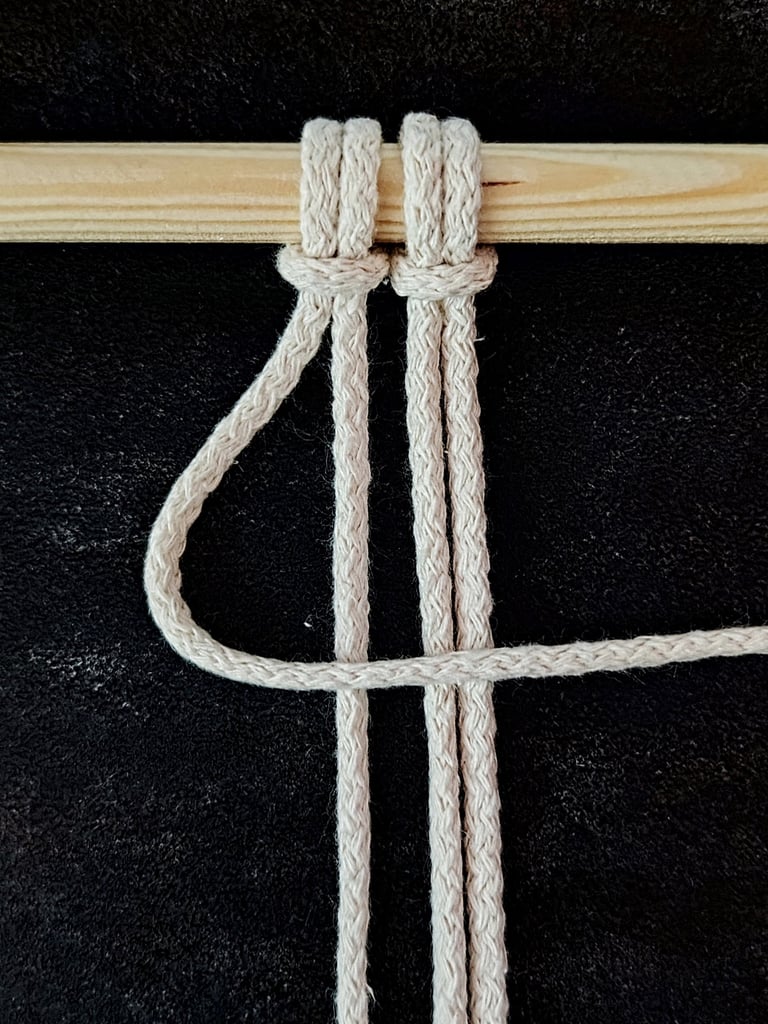

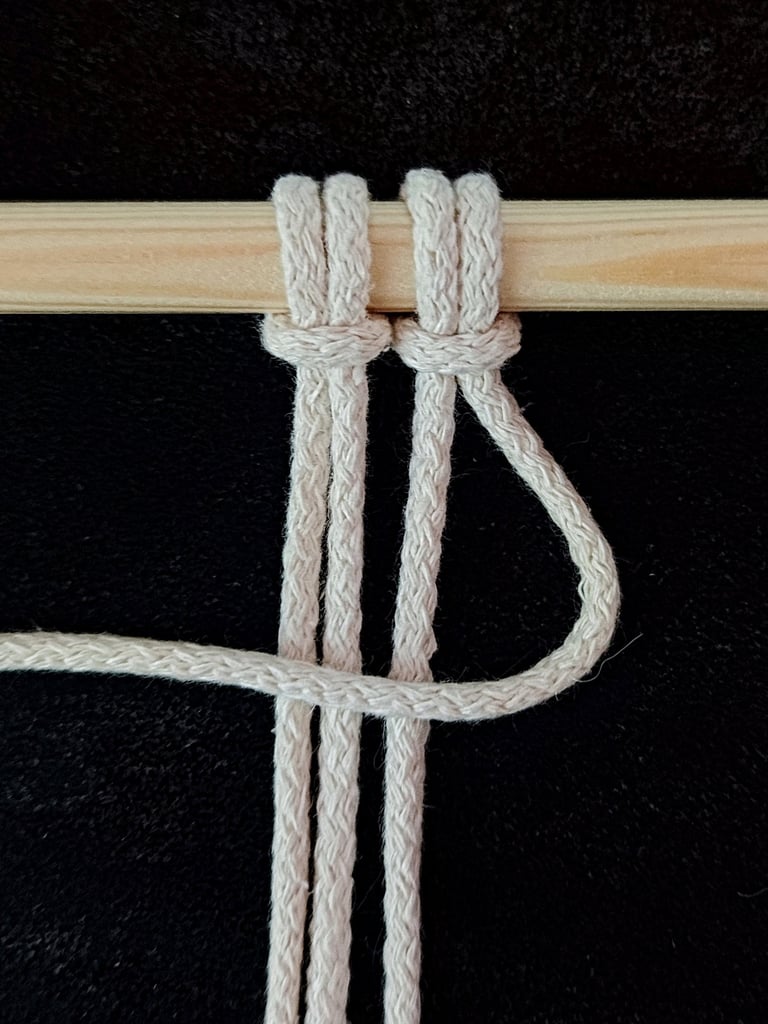

STEP 2
The direction—left or right-facing—depends on which working cord you begin with.

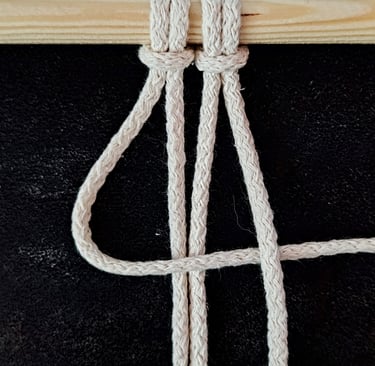
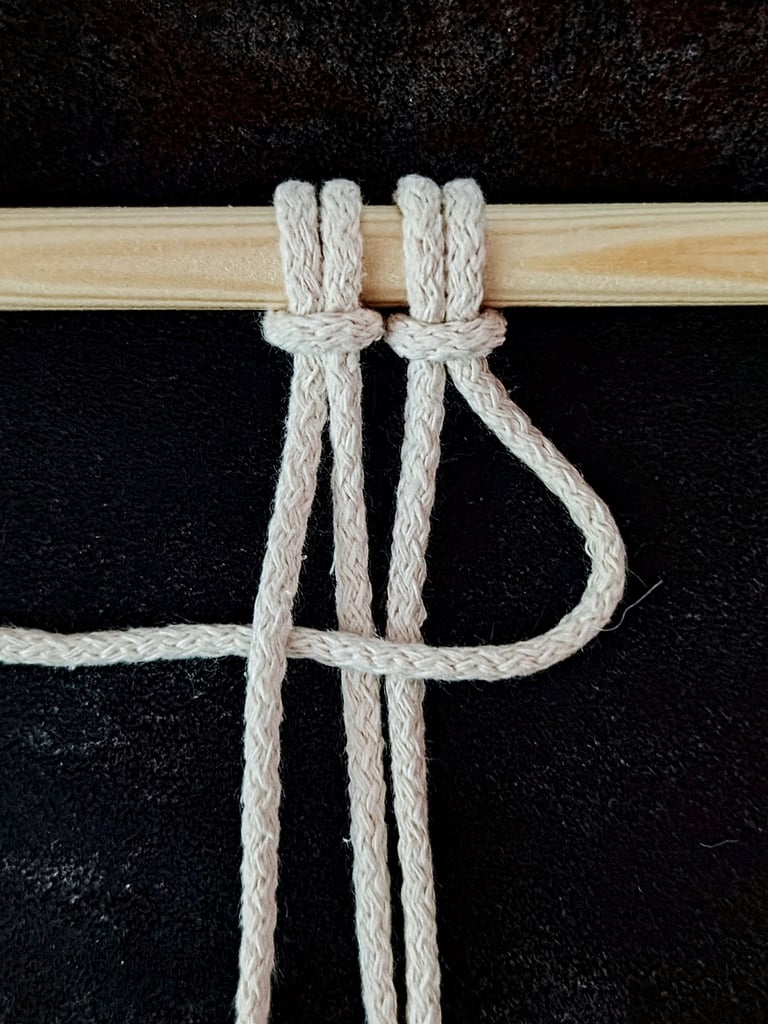

STEP 3
Bring the 1st working cord over the 2 anchor cords in the middle and then pass it under the 2nd working cord.
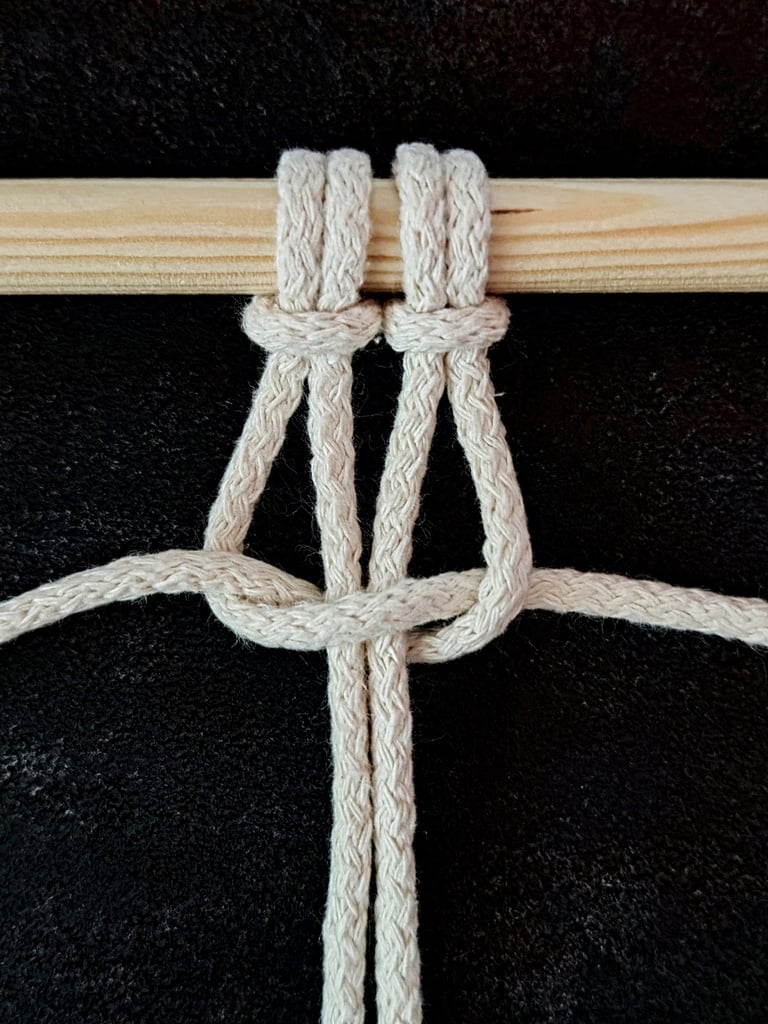

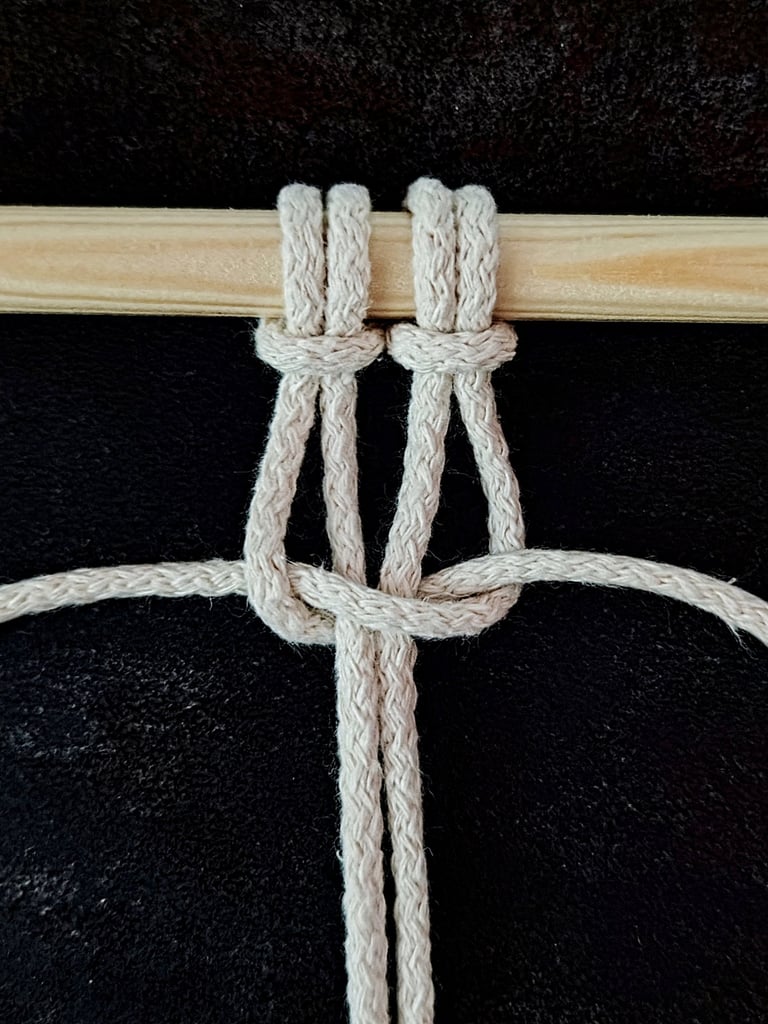

STEP 4
Bring the 2nd working cord under the 2 anchor cords and thread it through the loop created by the 1st working cord.
You have made a Half-Square knot.
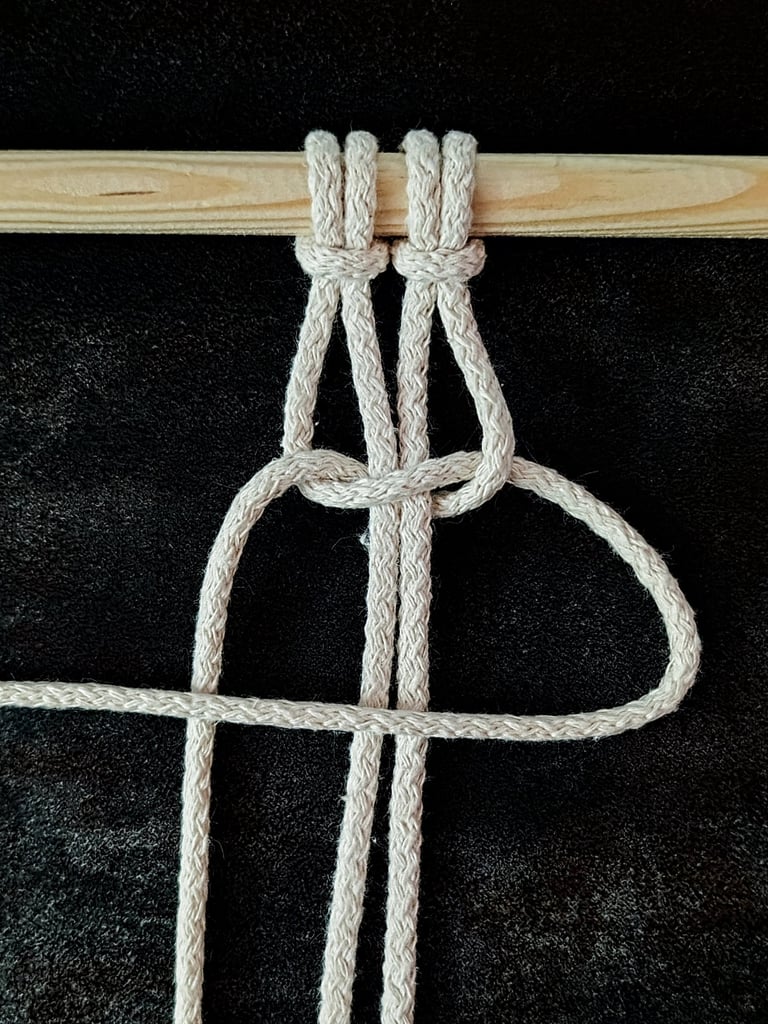

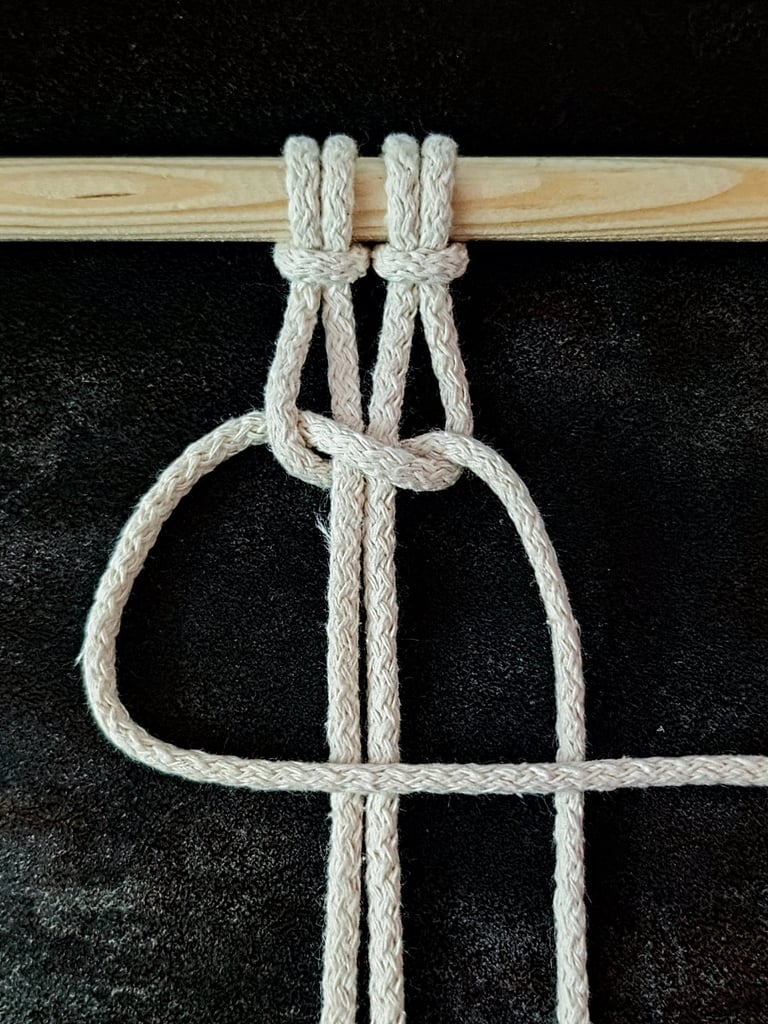

STEP 5
For the 2nd part of the Square knot, use the same working cord you began with. It will now be on the opposite side from where you started.
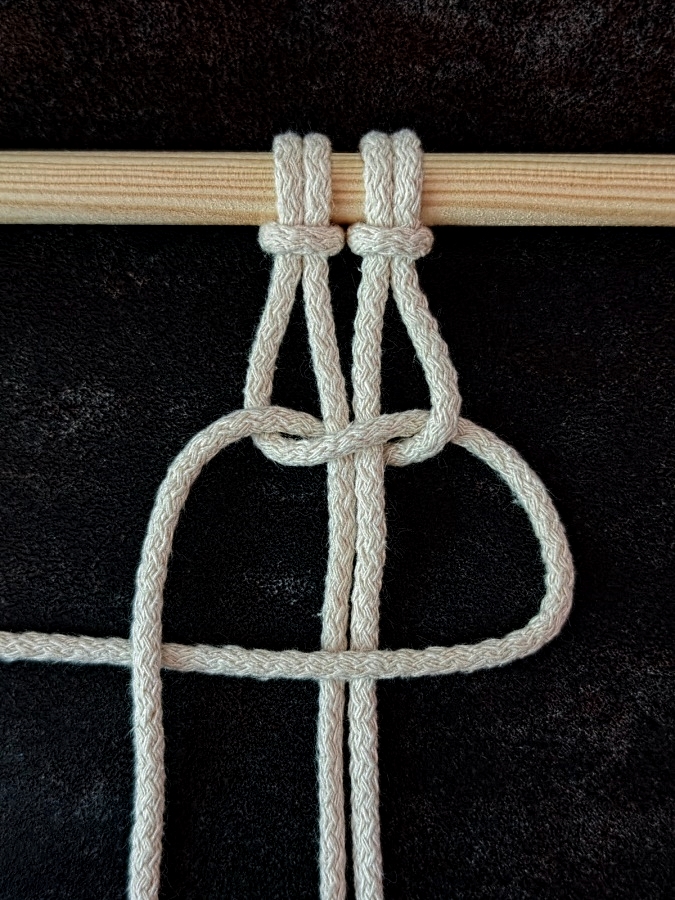

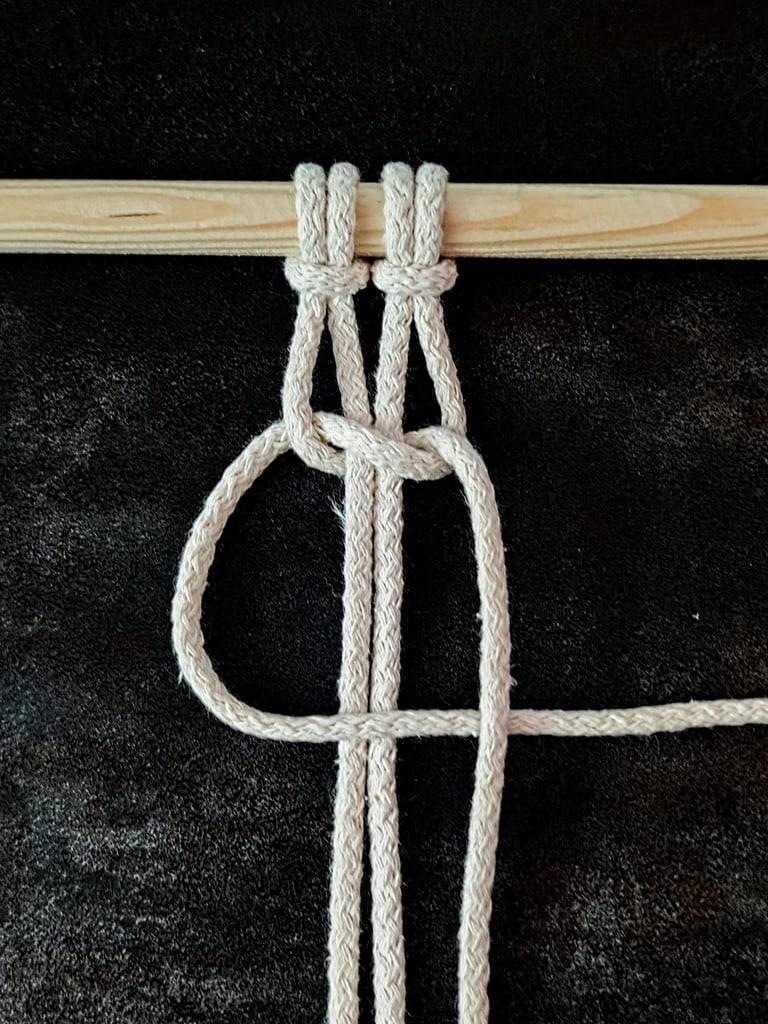

STEP 6
Take the working cord and pass it over the anchor cords in the center, then thread it under the 2nd working cord.
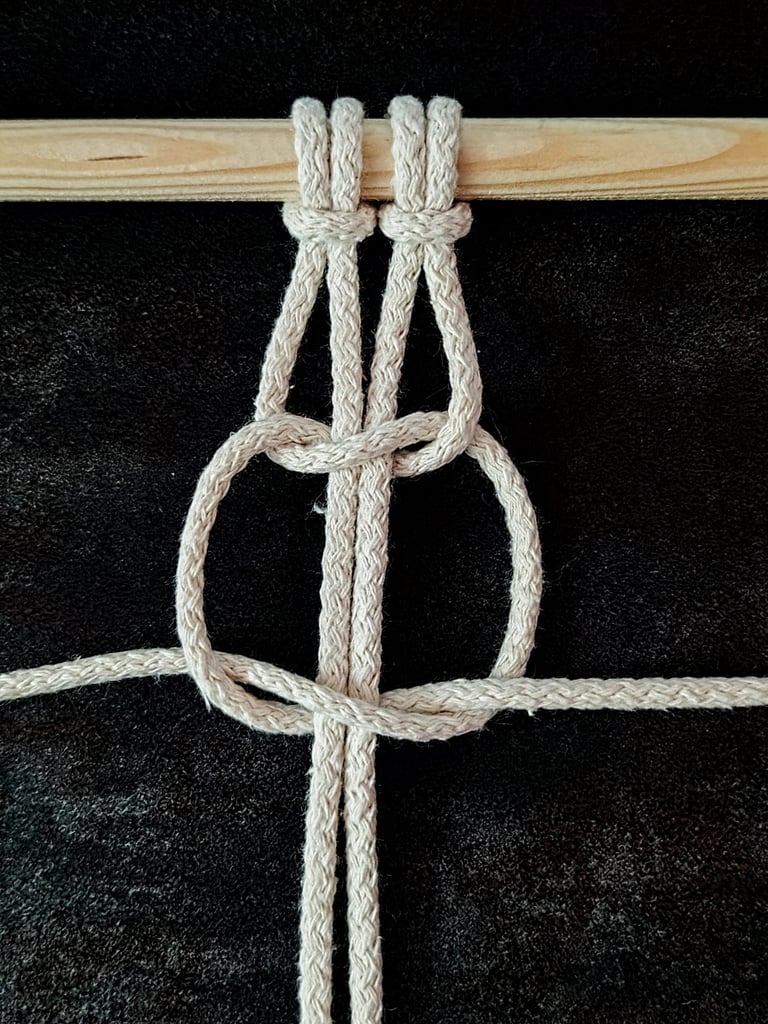

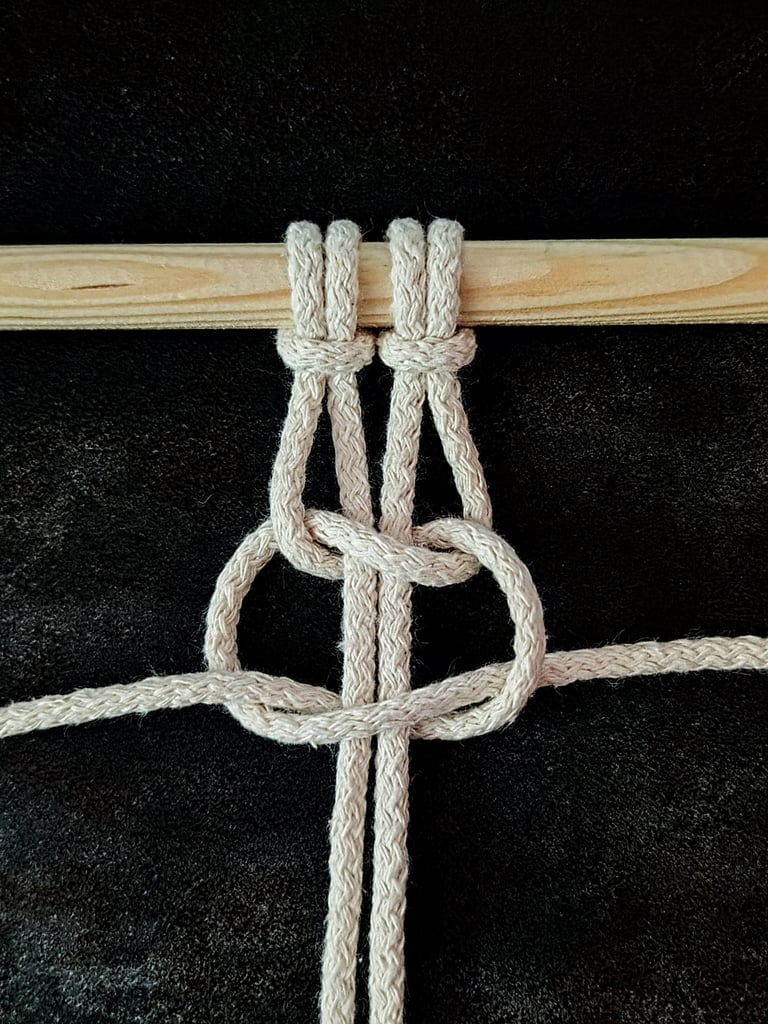

STEP 7
Take the 2nd working cord and pass it under the anchor cords in the middle, then bring it up through the loop you just made.
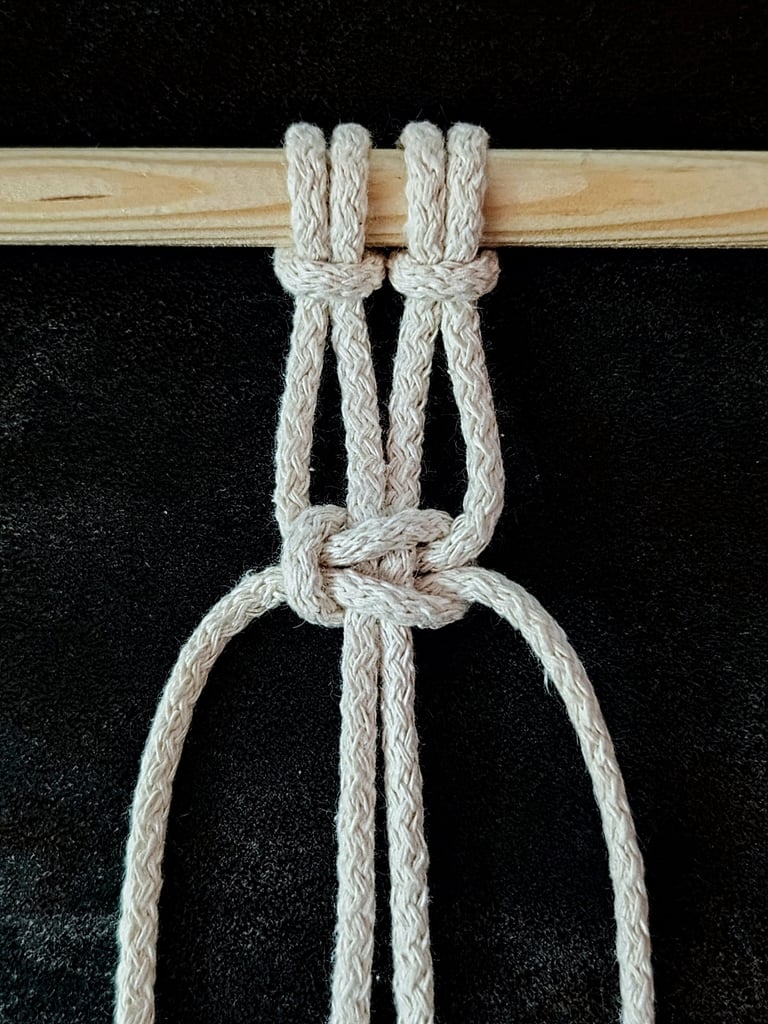

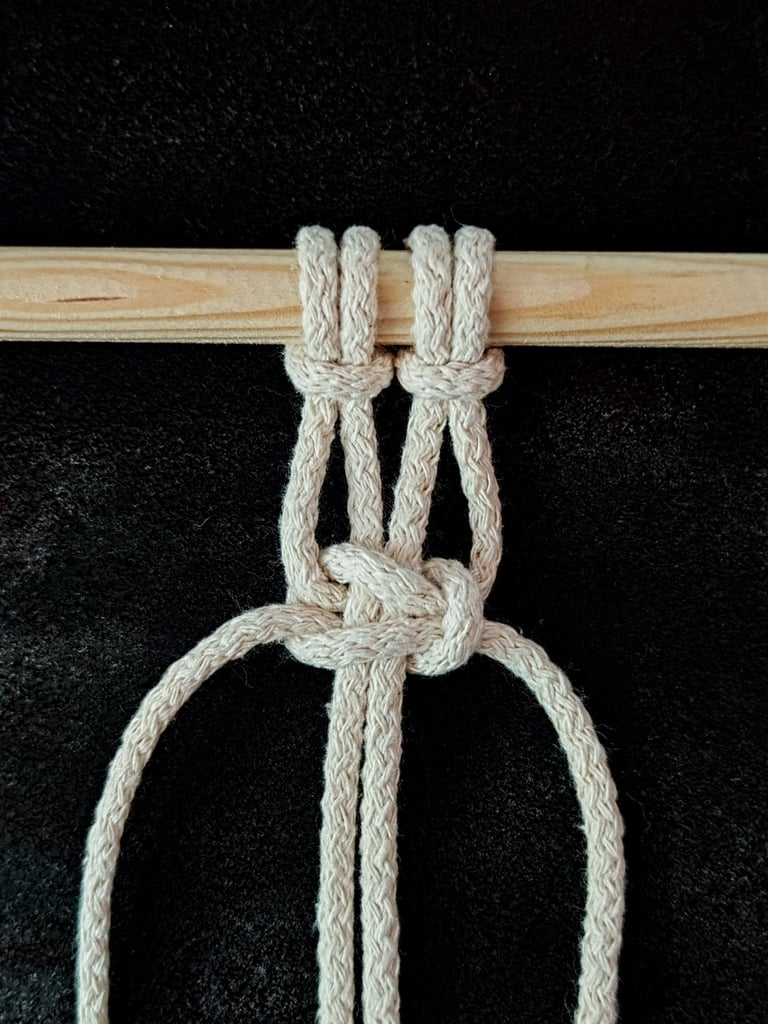

STEP 8
Pull both working cords evenly to tighten the knot.
A completed right-facing Square knot will have a small vertical bump on its right side, while a left-facing Square knot will have the bump on its left side.
Tips for Successful Square knots
Mastering Square knots involves controlling tension, preventing cord twisting, and keeping knot sizes uniform. These factors contribute directly to the overall appearance and durability of your macrame work.
Achieving Even Tension
Consistent tension is crucial for neat square knots. Pull the cords firmly but not too tight, to avoid distorting the pattern or causing thread breakage.
Try to keep your hands steady and adjust the tension gradually with each knot. If the knot feels too loose, the design will look uneven, but too tight makes the cords harder to work with.
You can use a clamp or tape to secure your workbase. This helps maintain steady tension and prevents the project from shifting as you tie knots.
Avoiding Twisting
Cord twisting can disrupt the look and structure of your Square knots. To avoid this, lay your cords flat and untwisted before starting each knot.
When pulling cords to tighten, always pull parallel to the working surface. Avoid pulling cords in a way that makes them spin or twist.
If a twist appears, pause and straighten the cords before proceeding. Twisting can weaken the integrity of your knot over time.
Consistent Sizing
Keeping your knots the same size creates a polished, professional appearance. Measure or visually check each knot as you go to maintain uniformity.
Focus on making your knots sit snug against each other without gaps or overlapping. Uneven knot sizes cause irregular spacing and can affect the overall pattern.
To practice, make sample rows of square knots. This exercise helps develop muscle memory for consistent knot placement and size.
Common Mistakes to Watch Out For
When working on your Square knots, attention to how you handle your cords and maintain balance is critical. Small errors can disrupt the pattern and affect the overall look and structure.
Incorrect Cord Placement
Placing your cords in the wrong position is one of the most frequent issues. It happens when you confuse the working cords with the filler cords, causing the knot to shift or look uneven.
Make sure to always identify the two outer cords as your working cords. These will wrap around the central filler cords to create the knot. If you switch sides or grab the wrong cords, the knot won’t lay flat and can twist.
To avoid this, use a consistent method for picking up cords every time. For example, start always from the same side and double-check before tying.
Unbalanced Knots
Unbalanced knots happen when the tension on your cords is uneven while tying. This can cause your Square knots to slant or twist, making the whole piece look uneven.
Focus on pulling your cords with consistent tension. Neither too tight nor too loose. Uneven pulling leads to knots that don’t sit correctly, especially when repeating square knots in a row.
Watch how each half of the knot forms. You want both sides to mirror each other in tightness. If the knot twists, it’s often due to grabbing the working cords from the same side twice in a row, so alternate sides carefully.
LEFT-FACING SQUARE KNOT

RIGHT-FACING SQUARE KNOT

